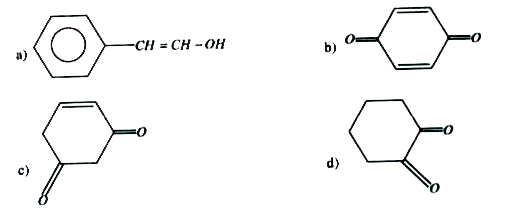Solubility of Ag CN is maximum in: Solution in Telugu
acidic buffer solution
basic buffer solution
in pure water
equal in all solution
The correct Answer is:A
In acidic buffer , equilibrium shifts towards right. So, solubility increases.
Topper's Solved these Questions
- BOOK - AAKASH SERIESCHAPTER - IONIC EQUILIBRIUM EXERCISE - ADDITIONAL PRACTICE EXERCISE (LEVEL -II PRACTICE SHEET (ADVANCED) (More than One correct answer Type Questions))4videos
IONIC EQUILIBRIUM
- BOOK - AAKASH SERIESCHAPTER - IONIC EQUILIBRIUM EXERCISE - ADDITIONAL PRACTICE EXERCISE (LEVEL -II PRACTICE SHEET (ADVANCED) (Linked Comprehension Type Questions))4videos
IONIC EQUILIBRIUM
- BOOK - AAKASH SERIESCHAPTER - IONIC EQUILIBRIUM EXERCISE - ADDITIONAL PRACTICE EXERCISE (LEVEL -II LECTURE SHEET (ADVANCED) (Matrix Matching Type Questions))2videos
IONIC EQUILIBRIUM
- BOOK - AAKASH SERIESCHAPTER - HYDROGEN AND ITS COMPOUNDSEXERCISE - QUESTIONS FOR DESCRIPTIVE ANSWERS20videos
HYDROGEN AND ITS COMPOUNDS
- BOOK - AAKASH SERIESCHAPTER - ISOMERISM EXERCISE - ADDITIONAL PRACTICE EXERCISE ( PRACTICE SHEET (ADVANCED) INTEGER TYPE QUESTIONS)10videos
ISOMERISM
Similar Questions
What is the concentration of CN− ions in a solution with 0.1 M HCl and 0.01 M HCN where Ka of HCN is 10−6 ?
02:17View SolutionFor a general reaction given below, the value of solubility product can be given us
AxBy=xA+y+yB−xa00a−sxsys
Ksp=(xs)x.(ys)y(or)Ksp=xxyy(S)x+y
Solubility product gives us not only an idea about the solubility of an electrolyte in a solvent but also helps in explaining concept of precipitation and calculation [H+] ion, [OH−] ion. It is also useful in qualitative analysis for the idetification and separation of basic radicals
Potussium chromate is slowly aded toa solution containing 0.20M Ag NO3, and 0.20M Ba(NO3)2. Describe what happensif the Ksp for Ag2,CrO4, is 1.1×10−12 and the Ksp of BaCiO4, is 1.2×10−10,View SolutionWhen Na2CO3 aqueous solution is being titrated with hydrochloric acid
Column-I Column-II(A) At the start of titration(P) Buffer solution of HCO−3andCO−23(B)Before the first equivalent point (Q)Buffer solution H2CO3andHCO−3(C)At the first equivalent point(R)Amphiprotic anion pH=(1/2)(pka1+pKa2)(D)Between first and second equivalent points(S)Hydrolysis of CO−2302:03View SolutionWhy the use of hard water is disadvantages?
01:27View SolutionTautomerism is exhibited by X number of compounds among the following. What is X.
 02:17View Solution
02:17View SolutionIUPAC name for K[Ag(CN)2] is
01:32View SolutionThe process of AgCN+KCNtoK[Ag(CN)_(2)] involves the oxidation of Ag.
07:29View SolutionNa[Ag(CN)2] लवण है-
00:36View SolutionThe name of the compound ([ Ag(NH_(3))_(2) ][ Ag(CN)_(2) ] is
01:44View SolutionWrite the IUPAC name of the complex: [Ag (NH_3)_2] [Ag(CN)_2] .
02:00View Solution[Ag(CN)2]−में π बन्धों की संख्या है।
View SolutionThe simultaneous solubility of Ag CN (K_(f) =2.5 xx 10^(-16) ) and AgCl (Ksp =1.6 xx 10^(-10 ) ) in 1. 0M NH_3 (aq) are respectively : [Given ,K_f [Ag(NH_3)_2^(+) ]= 10^(7) ]
01:25View SolutionSolubility of Ag CN is maximum in:
01:38View SolutionIonisation of K[Ag(CN)2] will give :
02:56View Solutionनिम्न अभिक्रिया में स्पष्ट कीजिए कि कौन - सी स्पीशीज ऑक्सीकरण हो रही है ? [Ag(CN)2]−+Zn→CNn(CN)4]2−+Ag
01:13View SolutionSufficient NaCN was added to 0.015 MAgNO3 to give a solution that was initially 0.1 M in CN− . What is the concentration of Ag+ in this solution after Ag(CN)−2, forms? The formation constant Kf for the complex ion Ag(CN)−2 is 5.6×1018.
Ag++2CN−⇔Ag(CN)2View Solution

